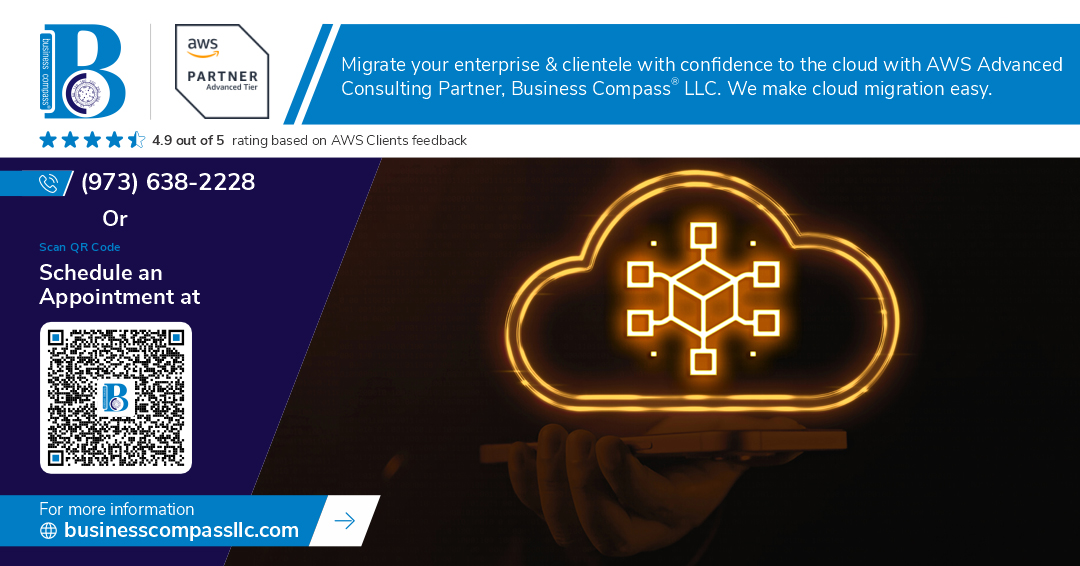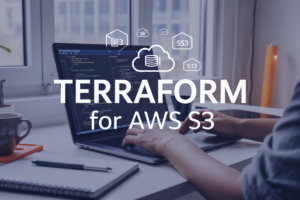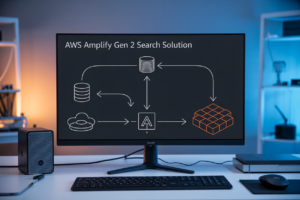AWS data transfer can make or break your cloud budget, especially as your business scales and moves more data across regions, availability zones, and external networks. Cloud engineers, DevOps teams, and IT managers need to understand how AWS charges for data movement and which services offer the best value for their specific use cases.
This guide breaks down AWS data transfer pricing models and shows you how to optimize costs without sacrificing performance. We’ll explore the core data transfer services AWS provides, including AWS S3 data transfer and AWS CloudFront pricing structures that directly impact your monthly bills. You’ll also discover practical strategies to reduce AWS data transfer costs through smart architecture decisions and proven optimization techniques.
We’ll cover three main areas: identifying the right AWS data migration tools and services for your workflows, understanding the pricing models that drive AWS bandwidth costs, and implementing AWS data transfer optimization strategies that can cut your expenses by 30-70% while improving performance.
Core AWS Data Transfer Services That Power Your Business Operations
Amazon S3 Transfer Acceleration for Faster Global File Uploads
Amazon S3 Transfer Acceleration speeds up file uploads to your S3 buckets by routing traffic through AWS CloudFront’s global edge locations. This service dramatically reduces upload times for users worldwide, especially when dealing with large files or slow internet connections. AWS data transfer becomes significantly more efficient as data travels through optimized network paths rather than standard internet routes. You’ll see the biggest improvements when uploading from distant geographical locations, with speed increases often reaching 50-500%. The service works seamlessly with existing S3 APIs and applications, requiring no code changes to implement.
AWS DataSync for Automated On-Premises to Cloud Migration
AWS DataSync automates and accelerates data transfer services AWS between on-premises storage systems and AWS cloud services like S3, EFS, and FSx. This managed service handles the heavy lifting of large-scale data migrations while maintaining data integrity through built-in verification processes. DataSync transfers data up to 10 times faster than traditional tools by using purpose-built network protocols and multi-threaded operations. You can schedule regular sync jobs to keep hybrid environments updated, making it perfect for backup strategies or gradual cloud migrations. The service also provides detailed logging and monitoring, giving you complete visibility into your transfer operations.
AWS Direct Connect for Dedicated Network Performance
AWS Direct Connect establishes dedicated network connections between your data centers and AWS, bypassing the public internet entirely. This private connection delivers consistent network performance and can significantly reduce AWS data transfer costs compared to internet-based transfers. You’ll get predictable bandwidth ranging from 50 Mbps to 100 Gbps, with the ability to create multiple virtual interfaces for different workloads. Direct Connect particularly shines for applications requiring high throughput, low latency, or enhanced security compliance. Many organizations see 50-80% reduction in AWS bandwidth costs when moving large datasets regularly between on-premises and cloud environments.
AWS Storage Gateway for Hybrid Cloud Integration
AWS Storage Gateway connects your on-premises environments to AWS cloud storage through a hybrid approach that feels seamless to your applications. The service offers three gateway types: File Gateway for NFS/SMB file shares, Volume Gateway for block storage, and Tape Gateway for virtual tape libraries. Your local applications continue working normally while data automatically syncs to S3, EBS, or Glacier in the background. This setup optimizes AWS data transfer by caching frequently accessed data locally while storing everything in the cloud. Storage Gateway becomes especially valuable for organizations wanting cloud benefits without completely changing their existing infrastructure or workflows.
Essential Tools to Streamline Your Data Movement Workflows
AWS CLI Commands That Simplify Bulk Data Operations
AWS CLI transforms complex data transfer tasks into simple command-line operations. The aws s3 sync command efficiently synchronizes entire directories with S3 buckets, while aws s3 cp handles individual file transfers with built-in retry logic. These commands support multipart uploads, parallel transfers, and bandwidth throttling to optimize AWS data transfer performance while managing costs.
AWS SDK Integration for Automated Application Data Transfer
AWS SDKs enable seamless programmatic data movement across your applications. Python’s boto3, Java SDK, and other language-specific libraries provide robust APIs for automating S3 uploads, cross-region replication, and database migrations. These tools integrate directly with your existing codebase, offering fine-grained control over transfer parameters, error handling, and progress monitoring for enterprise-scale data operations.
Third-Party Migration Tools That Complement AWS Services
Third-party AWS data migration tools bridge gaps between legacy systems and cloud infrastructure. Rclone supports over 40 cloud storage providers with advanced filtering and encryption capabilities. CloudEndure and AWS Application Migration Service streamline server migrations, while tools like Databricks and Talend handle complex ETL workflows, reducing overall AWS data transfer costs through optimized routing and compression techniques.
Data Transfer Pricing Models That Impact Your Monthly Bills
Ingress vs Egress Costs Across Different AWS Regions
AWS data transfer costs work differently depending on the direction of your data flow. Ingress traffic – data coming into AWS – is typically free from the internet, but egress traffic – data leaving AWS – carries charges that vary by region and destination. US East regions generally offer the lowest egress rates, while Asia Pacific regions tend to be more expensive for outbound data transfers.
Volume-Based Pricing Tiers and When They Apply
AWS uses a tiered pricing structure for data transfer that rewards higher usage volumes. The first 10TB of egress data each month costs more per GB than the next 40TB, with further discounts applying to even larger volumes. These tiers reset monthly and apply across most AWS data transfer services, making high-volume transfers more cost-effective for enterprise customers.
Cross-Region Transfer Fees That Add Up Quickly
Moving data between AWS regions incurs significant charges that many users underestimate. Cross-region data transfers typically cost $0.02 per GB in both directions, which can quickly escalate for applications that frequently replicate data or access resources across multiple regions. These AWS data transfer costs are particularly impactful for disaster recovery setups and multi-region architectures.
Internet Gateway Charges for Public Data Access
Internet Gateway data transfers represent a major component of AWS bandwidth costs for public-facing applications. Every GB of data served to internet users through an Internet Gateway incurs egress charges, with rates varying by region and volume. Web applications, APIs, and content delivery scenarios generate substantial Internet Gateway fees that directly impact monthly AWS bills.
VPC Peering Costs for Internal Data Movement
VPC peering connections enable private data transfer between Virtual Private Clouds, but these transfers aren’t free. Same-region VPC peering costs $0.01 per GB in each direction, while cross-region VPC peering combines standard cross-region transfer fees with additional peering charges. These costs can surprise organizations building complex multi-VPC architectures or hybrid cloud solutions that require frequent inter-VPC communication.
Proven Cost Optimization Strategies to Reduce Transfer Expenses
Regional Placement Planning to Minimize Cross-Region Transfers
Smart regional placement cuts AWS data transfer costs dramatically by keeping resources close to users and data sources. Place compute resources, databases, and storage in the same AWS region where your primary user base operates. Cross-region transfers cost $0.02 per GB, while intra-region transfers are often free. Design your architecture with regional boundaries in mind – replicate frequently accessed data locally rather than pulling it across regions repeatedly.
CloudFront CDN Implementation for Reduced Egress Costs
CloudFront CDN slashes AWS data transfer pricing by caching content at edge locations worldwide, reducing expensive S3 egress charges. Direct S3 downloads cost $0.09 per GB for the first 10TB monthly, while CloudFront charges just $0.085 per GB with better global performance. Configure CloudFront for static assets, API responses, and media files. The CDN pays for itself quickly with high-traffic applications, especially when serving international users who would otherwise trigger costly cross-region transfers.
Data Compression Techniques That Cut Transfer Volume
Compression reduces AWS bandwidth costs by shrinking payload sizes before transmission. Enable gzip compression on web servers and APIs to cut text-based transfers by 60-80%. Use efficient formats like WebP for images and modern codecs for video content. S3 Transfer Acceleration works better with compressed data, and smaller payloads mean faster transfers. Configure compression at multiple levels – application layer for APIs, CDN level for static content, and database compression for backup transfers.
Transfer Scheduling During Off-Peak Hours for Better Rates
Schedule large data transfers during off-peak hours to reduce AWS data transfer costs and improve performance. While AWS doesn’t offer time-based pricing discounts like some providers, off-peak scheduling reduces network congestion and improves transfer speeds. Use AWS Lambda with CloudWatch Events to automate transfers during low-traffic periods. Batch processing during nights and weekends also reduces the risk of impacting production workloads and allows for better error handling and retry logic.
Performance Optimization Techniques for Faster Data Movement
Moving data in and out of AWS doesn’t have to break the bank or slow down your operations. The key services like S3 Transfer Acceleration, DataSync, and Direct Connect each serve specific purposes, while tools like AWS CLI and third-party solutions can make your workflows smoother. Understanding how pricing works across different transfer types and regions helps you avoid surprise charges that can quickly add up.
Smart cost management comes down to choosing the right transfer methods, setting up proper monitoring, and taking advantage of optimization techniques like compression and parallel transfers. Start by auditing your current data movement patterns, then implement the strategies that make the most sense for your workload. Your future self will thank you when those AWS bills stay predictable and your data moves faster than ever.




















